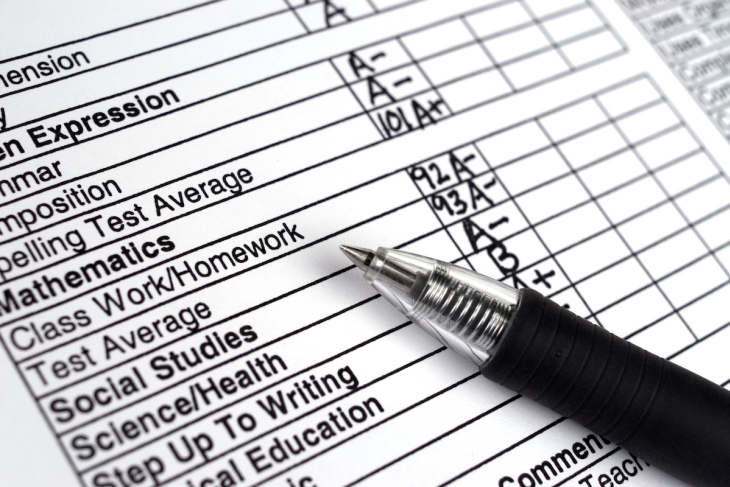Recent years have seen a flood of new grading policies that risk lowering academic standards in the name of equity. Though the movement for “equitable” grading initially took root in the 2000s and 2010s, it accelerated during the pandemic. In the face of widespread school shutdowns in the spring of 2020, districts scrambled to respond to students’ unprecedented needs. Amidst an environment of racial reckoning, economic crisis, and a global pandemic, concerns about equity and mental health motivated many educators and policymakers to add to or expand previous grading reforms, whether through pass/fail options, counting “needs improvement” as a final grade, prohibiting grade drops below pre-pandemic levels, or waiving standard graduation requirements.
The push to “give students grace” was understandable in that moment. Out-of-school inequities played a larger-than-ever role in students’ academic lives, with many students sharing devices with siblings, lacking quiet places to study, and struggling to access the internet to join class. Yet the return to traditional, in-person instruction did not bring a return to traditional grading policies. To the contrary, more districts than ever put into place grading policies that many district leaders believed were better for “equity” or, more precisely, for leveling the playing field for disadvantaged students. These policies include minimum grading (e.g., giving students no less than 50 percent of possible points), prohibiting grading penalties for late work and even for cheating, and promoting alternatives to the traditional 0–100 scale, revising it to a 0–4 scale, for example.
These changes in grading practices deserve greater scrutiny. Indeed, they risk removing both discretion from teachers and crucial incentives for students to study hard and cooperate with teachers and peers. Although some grading reforms may benefit students, those that water down expectations ultimately harm the students they are meant to help—thereby risking long-term damage to the educational equity their advocates purport to advance.
Consider the fact that many grading reforms, from requiring at least half-credit on all student assignments to eliminating penalties for late work, can easily lead to reduced academic expectations for students. While there is no rigorous research showing that eliminating penalties for students helps them learn more, a growing literature on grading practices strongly suggests that students learn more when teachers hold them more strictly accountable for their performance in class. For example, a 2004 study by professors David Figlio and Maurice Lucas analyzed the academic performance of elementary school students based on their teachers’ grading practices. Students assigned to teachers who graded more strictly went on to experience greater test-score growth in both reading and math. And in a similar 2020 study, American University’s Seth Gershenson found that high school students assigned to a tougher-grading teacher scored higher in math, both in that teacher’s class and in subsequent math courses, a finding that held true for all students, regardless of gender, race, or prior academic performance.
The rationale behind rigorous teacher grading standards is straightforward: Being exposed to a higher standard prompts many students to try harder, and this increased effort leads to more learning. In a study of college students, economist Phillip Babcock found that students who expected a “C” in their class studied about 50 percent more than students who expected an “A.”
The risks of lowering expectations through misguided grading reforms lead us to three main implications for policymakers and educators.
First, policymakers and educators should be wary of lowering standards through lenient grading policies. Those include “no-zero” mandates, bans on grading homework, and prohibitions on penalties for late work and cheating. Such policies tend to reduce expectations and accountability for students, hamstring teachers’ ability to manage their classrooms and motivate students, and confuse parents and other stakeholders who do not understand what grades have come to signify. All this makes addressing recent learning loss even harder.
Second, district leaders and state education agencies should support teachers in maintaining high expectations and holding the line on grade inflation. Educators need to know what high expectations look like. State and district leaders can present them with research on the connection between tough grading standards and student learning, as well as provide feedback data about their grading standards relative to their peers.
Third, teachers should try to take the best parts from both traditional and equity-oriented grading approaches. Many traditional practices have persisted for good reason, but a few equity-motivated grading reforms deserve to be adopted more widely. Specifically, there are good reasons for policymakers and educators to consider eliminating most extra credit assignments and implementing rigorous grading rubrics and “blind” scoring practices. These specific reforms do not lower academic standards, but they can strengthen academics and combat bias.
The push for more “equitable” grading policies has exacerbated grade inflation and yielded scant evidence of greater learning. Some aspects of traditional grading can indeed perpetuate inequities, but top-down policies that make grading more lenient are not the answer, especially as schools grapple with the academic and behavioral challenges of the post-pandemic era.





